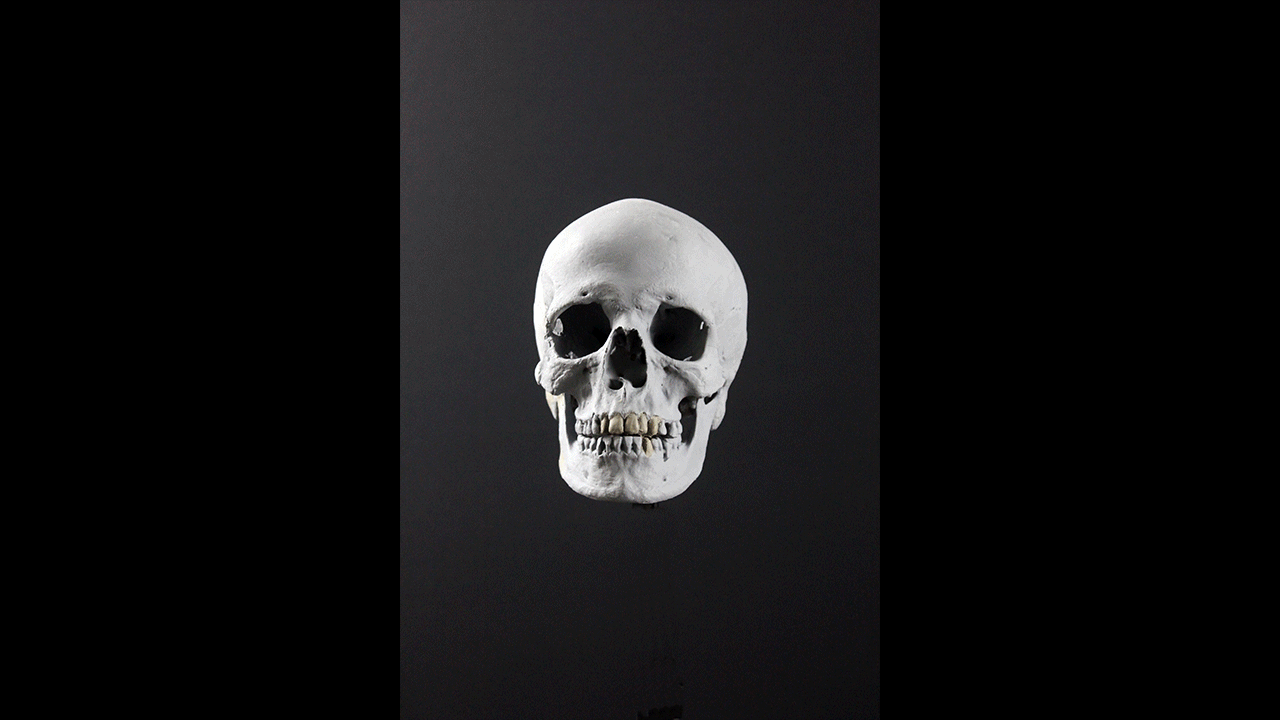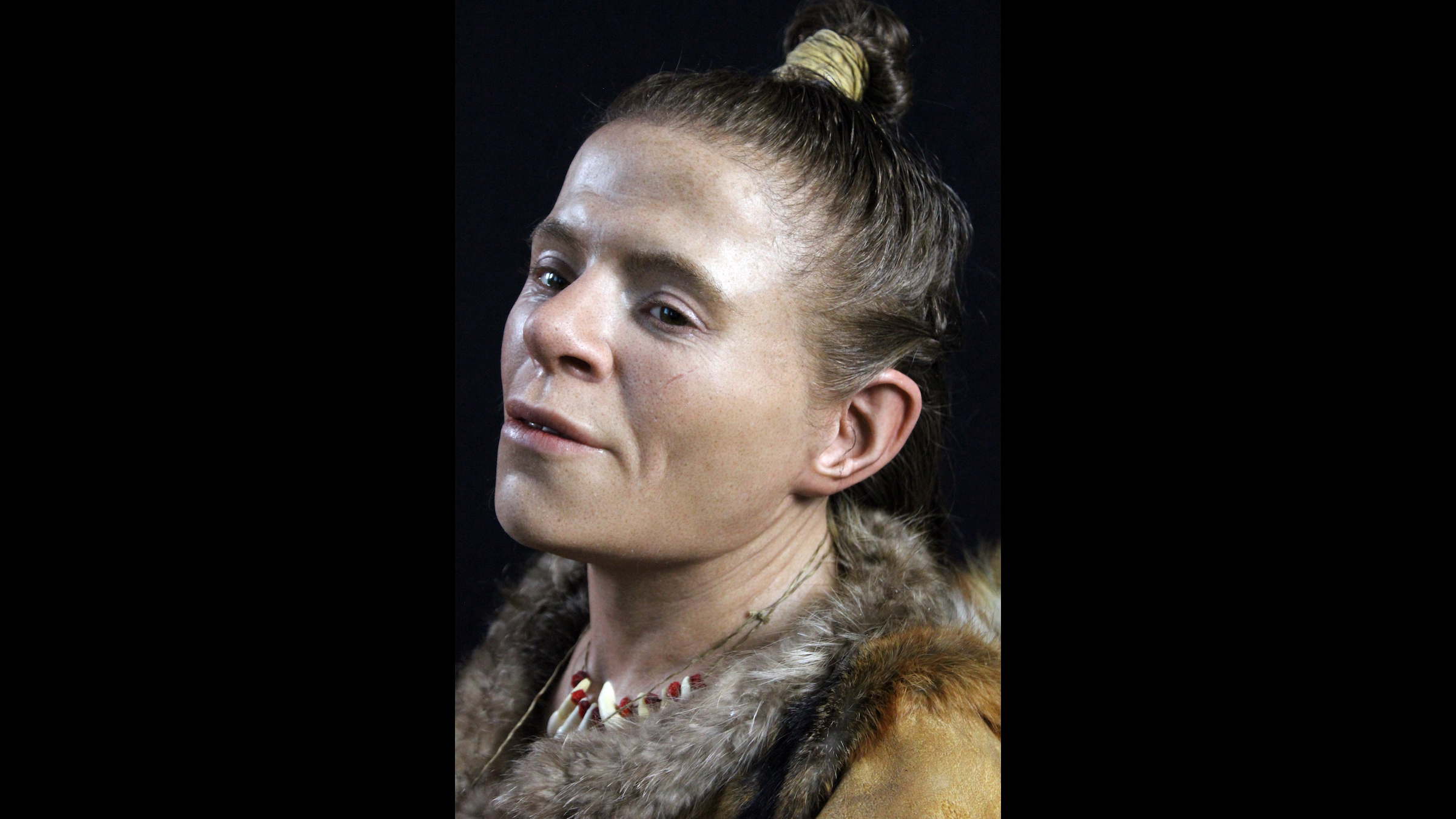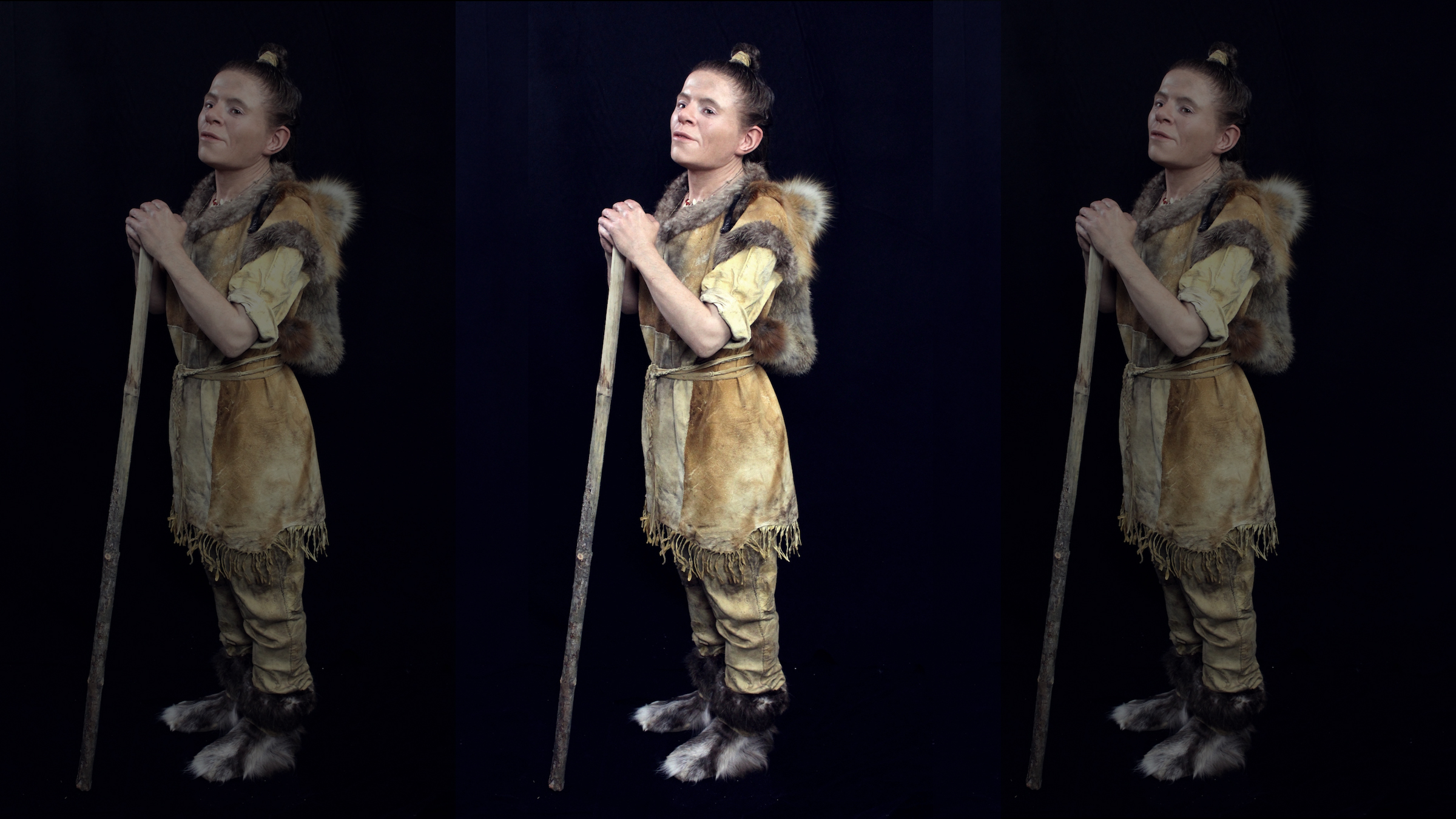See a stunning, life-like reconstruction of a Stone Age woman
Her fur clothes were mixed with moose brains.

A Stone Age woman who lived 4,000 years ago is leaning on her walking stick and looking ahead as a spirited young boy bursts into a run, in a stunning life-size reconstruction now on display in Sweden.
Although her likeness is new — it debuted last month in an exhibit about ancient people at Västernorrlands Museum — researchers have known about this woman's existence for nearly a century. During the construction of a road in the hamlet of Lagmansören in 1923, workers found her skeletal remains buried next to the remains of a child, likely a 7-year-old boy.
"With our eyes and perhaps in all times, you tend to think that this is a mother and son," said Oscar Nilsson, the Sweden-based forensic artist who spent 350 hours creating the lifelike model. "They could be. Or they could be siblings: sister and brother. They could be relatives, or they could just be tribe friends. We don't know, because the DNA was not that well preserved to establish this relationship."
But as Nilsson molded the woman's posture and sculpted her face, he pretended that she was near her son who was scampering ahead of her. "She's looking with the mother's eyes — both with love and a bit of discipline," Nilsson told Live Science. This stern but tender gaze looks as if she's on the cusp of calling out to the boy, telling him to be careful.
Related: Photos: See the ancient faces of a man-bun-wearing bloke and a Neanderthal woman
The Neolithic woman and youngster were interred in a cist grave, a burial built with long, flat stones in the shape of a coffin. The woman died in her late 20s or early 30s, and at 4 feet, 11 inches (150 centimeters) in height, "she was not a very tall person," even for the Neolithic period, Nilsson said.
The woman's remains didn't show any signs of malnutrition, injury or diseases, although it's possible that she died of an illness that didn't leave a mark on her remains, Nilsson said. "She seems to have had a good life," he said. She ate land-based food, an examination of the isotopes (different versions of elements) in her teeth revealed, which was odd given that her grave was found near a fish-filled river near the coast, he said.
Get the world’s most fascinating discoveries delivered straight to your inbox.
When Nilsson received the commission to reconstruct the woman two years ago, he scanned her skull and made a copy of it with a plastic 3D printer. As with other reconstructions he's created, including those of an ancient Wari queen from what is now Peru and a Stone Age man whose head was found on a spike, Nilsson had to take into account the ancient individual's sex, age, weight and ethnicity — factors that can influence the person's facial tissue thickness and general appearance. But because the woman's DNA was too degraded, he wasn't sure about her genetic background, hair or eye color.
So Nilsson took an educated guess about her appearance. There were three large migration waves into ancient Scandinavia: During the first, hunter-gatherers with dark skin who tended to have blue eyes arrived between 12,000 and 10,000 years ago; the second wave included pale-skinned, dark-haired and brown-eyed farmers from further south who moved north about 5,000 to 4,000 years ago, when this woman was alive; and the third wave included the Yamnaya (also spelled Yamna) culture from modern-day Ukraine, who were a bit darker-skinned than the farmers and brought the art of metal making with them when they arrived about 3,500 years ago, making them the first Bronze Age culture in the region, Nilsson said.
Based on this information, Nilsson gave the woman brown hair and eyes, and light skin like the farmers'. Even so, the woman wasn't necessarily a full-time farmer; she likely participated in a mix of hunting and gathering as well as agricultural practices, he said.
Related: Stone Age man, whose skull was found on a spike, gets facial recreation (photos)
"We can't say for sure whether she was living a nomadic life, if she was living the life of the early farmers; it's impossible to say," Nilsson said. "But we have chosen to make the safest interpretation, which is she was both because, of course, there was a transition period of many hundreds of years when they left the old way of living."




Fancy furs, Stone Age style
In the reconstruction, the woman from Lagmansören is dressed head to toe in fur and leather. This is the work of Helena Gjaerum, a Sweden-based independent archaeologist who uses Stone Age techniques for tanning leather.
Before dressing the model, Gjaerum studied the ancient climate, landscape, vegetation and animal life of Neolithic Lagmansören. Based on what she uncovered, she designed the woman's clothes out of moose and elk, the shoes out of reindeer, beaver and the backpack out of fox. The woman likely stuffed hay inside the shoes for padding, noted Gjaerum, who took inspiration from clothing worn by Indigenous Americans and Indigenous Siberians, as well as the leather clothing of Özti the Iceman mummy, who lived about 5,300 years ago in the Italian Alps.
Preparing the clothes entailed hours of labor. Gjaerum, who acquired real animal remains, scraped the flesh off the skins and then put them in a river — a method that helps loosen the fur from the skin. Next, she scraped off the fur and slathered on a solution made of moose brain, a fatty mixture that bonds with skin fibers. Without this mixture, the skin would stiffen and could easily rot if it got wet, she said.
The next several steps involved massaging, stretching and smoking the skins and then finally designing the clothing. Gjaerum's young son, who was about the same height as the Stone Age woman, served as a helpful model, Gjaerum said. She made the clothing as comfortable and practical as possible — for instance, by not putting a seam at the top of the shoulder, where water might seep in during rainy weather.
Often, modern people think of Stone Age humans as primitive, dressed in ugly, toga-like furs as in "The Far Side" comics. But Gjaerum challenged that perception. "I think it would be crazy to think she'd have primitive clothes," Gjaerum told Live Science. "I wanted to make her dress like you could dress today" because you are both Homo sapiens.
Editor's note: Updated at 11:19 a.m. EDT on March 21 to note that the reconstruction's backpack, not the shoes, were made of fox.
Originally published on Live Science.

Laura is the managing editor at Live Science. She also runs the archaeology section and the Life's Little Mysteries series. Her work has appeared in The New York Times, Scholastic, Popular Science and Spectrum, a site on autism research. She has won multiple awards from the Society of Professional Journalists and the Washington Newspaper Publishers Association for her reporting at a weekly newspaper near Seattle. Laura holds a bachelor's degree in English literature and psychology from Washington University in St. Louis and a master's degree in science writing from NYU.



